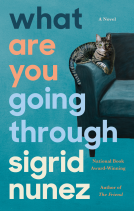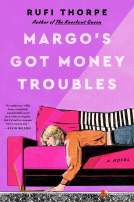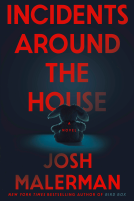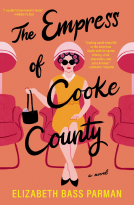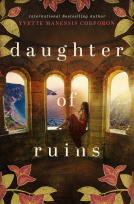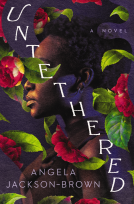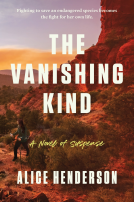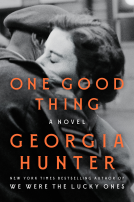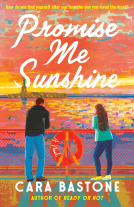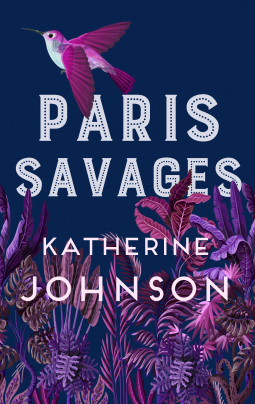
Paris Savages
by Katherine Johnson
This title was previously available on NetGalley and is now archived.
Send NetGalley books directly to your Kindle or Kindle app
1
To read on a Kindle or Kindle app, please add kindle@netgalley.com as an approved email address to receive files in your Amazon account. Click here for step-by-step instructions.
2
Also find your Kindle email address within your Amazon account, and enter it here.
Pub Date Jul 23 2020 | Archive Date Jul 30 2020
Talking about this book? Use #ParisSavages #NetGalley. More hashtag tips!
Description
A story of love, bravery, culture, and the fight against injustice, Paris Savages brings a little-known part of history to blazing life.
Fraser Island, Australia, 1882. The population of the Badtjala people is in sharp decline following a run of brutal massacres. When German scientist Louis Müller offers to sail three Badtjala people – Bonny, Jurano and Dorondera – to Europe to perform to huge crowds, the proud and headstrong Bonny agrees, hoping to bring news of his people’s plight to the Queen of England.
Accompanied by Müller’s bright daughter, Hilda, the group begins their journey to belle-époque Europe to perform in Hamburg, Berlin, Paris and eventually London. While crowds in Europe are enthusiastic to see the unique dances, singing, fights and pole climbing from the oldest culture in the world, the attention is relentless, and the fascination of scientists intrusive. When disaster strikes, Bonny must find a way to return home.
Advance Praise
‘A masterful work, fully realised and richly embroidered’ Alice Nelson, author of The Children’s House
‘A masterful work, fully realised and richly embroidered’ Alice Nelson, author of The Children’s House
Available Editions
| EDITION | Ebook |
| ISBN | 9780749026073 |
| PRICE | £9.99 (GBP) |
Featured Reviews
 Book B, Reviewer
Book B, Reviewer
I found this novel to be really interesting and quite a surprise. It's inspired by a real story that I certainly hadn't heard of and I think this wil be true of many. Three Aboriginal people – Bonangera Dorondera and Jurano – are taken to Europe as living exhibits in 1882-83. They were seen as oddities and put on display in some sort of freak shows that were shamefully popular in Victorian times. These human zoos were meant to encourage people to learn about far and distant lands but actually managed to make a mockery of people.
There are eye opening moments here and some parts of the novel will have you gasp and cry out in horror. It's very affecting. They are forced to perform for crowds in various cities and then when that's all over, the scientists are waiting to take a look at them. This was based on true facts? It's unbelievably sad. No that's an extreme understatement. Shocking and unforgivable would be more like it.
There are some dark messages and lessons to take from this but it's also a fine and gripping read. That cover is also something else! The author has done some wonderful research and taken great pains to hide it in a compelling story - hide it well so that you know it's there as it seeps into the words but you can't 'see' it. That's the right writer to tackle such a book as this.
 Reviewer 618436
Reviewer 618436
This was a very interesting and eye opening novel and I don't know whether to be amazed or horrified that it's based on a true story. It took me a couple of tries to really get into the swing of this, but on the whole it was an enjoyable read.
In her Author's Note, Katherine Johnson describes Paris Savages as "a work of imagination" inspired by a little-known true story. That story involves three Aboriginal people - Bonangera (known as Bonny), Dorondera and Jurano - members of the Badtjala tribe, who were taken from their home on K'gari (Fraser Island) to Europe as living exhibits in 1882-83.
Katherine also explains her choice not to assume Aboriginal viewpoints in telling the story. So, alongside the narrative told from the point of view of Hilda Muller, daughter of the German scientist who organises the trip, and excerpts from Hilda's journal, a "ghost storyteller" provides the reader with an insight into Bonny's experiences. Initially, I was unsure about this element of magic realism but I came to see it as a way of replicating, honouring even, the belief of the Badtjala people in spirit guides and an oral storytelling tradition.
For Hilda, the trip to Europe is a process of disillusionment as her trust in her father's judgment and motives are tested. "Surely he would not have anything to do with a venture that collects people as curiosities and promises them 'fancy articles', as if they were children." She is torn between her love for her father, still grieving the death of Hilda's mother, Christel, her desire to support him in bringing to fruition her mother's dream of a reserve for the threatened Badtjala people, and her doubts about the trip.
When they arrive in Europe, the initial excitement that greets them soon gives way to misgivings about how they are being represented in the displays organised for the paying public. They are exhibited as curiosities, forced to engage in often unrepresentative activities, or dance displays that ignore their traditional meaning. "That is where the interest lies. Natural. Exotic. Picturesque." It poses the question, who are the savages? Those on display, or those who watch?
Alongside the "human zoos", I'm sure I'm not the only reader to share Hilda's growing sense of horror at the indignities and pseudo-scientific procedures to which the three Badtjala people are subjected. With a growing sense of guilt she wonders if she has led her 'friends', as she thinks of them, into a terrible trap.
Hilda becomes increasingly dismayed at the gulf between the enlightened views inherited from her mother and those of many of the supposedly educated individuals she encounters. She wonders, "Was she so different from most whites in her beliefs? Had her mother indeed been as alone in her opinions as she had said?" She recalls the words of her mother that "we do not need rulers and lengths of tape to see that our friends are as human as we are".
At one point the ghost storyteller whispers to Bonny's son back on K'gari, "Sorry, Little Bonny, if this story is becoming difficult for you to hear. It is becoming difficult, too, to tell." The story of Bonangera, Dorondera and Jurano is a difficult one to read, especially as it is based on fact. I think we'd all like to imagine we have come a long way since the days when human beings were exhibited in zoos and freak shows. However, as recent events have demonstrated, ending inequality, valuing other cultures, and protecting the natural world are still live issues.
In highlighting the story of Bonangera, Dorondera and Jurano, Paris Savages not only provides a fascinating, if disturbing, insight into the past but is a timely reminder that challenges still remain in how we treat one another.
 kATHLEEN G, Reviewer
kATHLEEN G, Reviewer
An interesting novel about how opportunists turned human beings into zoo animals of.a sort. Johnson uses Hilda, the teen daughter of Louis Muller, who took the men from their home on Fraser Island, to tell their story, To be fair, they do go willingly although once in Europe, Bonny, Jurano, and Dorondera realize how they are being exploited, The sad part is that this is based on a true story. It's clearly been carefully and exhaustively researched and it's told with sensitivity. Thanks to Netgalley for the ARC. A slice of history which will make you shake your head.
Paris Savages, by Katherine Johnson, is based on a true story. We follow three Badtjala people - Bonny, Dorondera and Jurano - as they journey from K’gari (Fraser Island) to Europe, where they’re expected to perform for curious crowds at ‘ethnic shows’ (or ‘human zoos’) and take part in intrusive and degrading scientific experiments. We aren’t privy to Dorondera and Jurano’s motivations for travelling to Europe, but Bonny has a definite aim: to personally meet Queen Victoria and ask her to grant protection to his people.
The trip is arranged by German scientist Louis Müller, who has been living on K’gari for the last few years with his 16-year-old daughter, Hilda. Having been on the island from a young age, Hilda is well-versed in the Badtjala language and culture and considers the islanders her friends. However, as she witnesses their treatment in Europe and tragic events occur, she comes to realise how naïve she has been, and that her father wasn’t the honourable man she thought he was.
I found Paris Savages incredibly interesting. I’d previously enjoyed learning about Aboriginal life and beliefs from Lucinda Riley’s The Pearl Sister, so I welcomed the chance to further my knowledge. I found the initial scenes on K’gari really vivid and fascinating and loved finding out what life was like on the island - while also aware that it wasn’t what it used to be, due to brutal massacres at the hands of white Europeans. It’s clear that Johnson did a lot of research for this book.
While the rest of the book is interesting, at the same time, it’s horrifying. From the moment they set foot on the boat, Bonny, Dorondera and Jurano are subject to discrimination, which Louis only weakly challenges and Hilda, due to her age and gender, can only fight to a certain extent. Once they arrive in Germany, the trio are expected to perform their culture - Badtjala songs and dances, fighting, throwing spears and boomerangs, climbing - to crowds who regard them as less than human, be measured and plaster-casted by scientists who regard them similarly, and live in inferior conditions to their white fellow travellers.
I was constantly on edge as the three were never far from a racist incident where they were at best patronised and at worst abused. I silently cheered whenever they played their audiences or ‘employers’ by, for example, insulting them in Badtjala or making extra money on the side. To an extent, Bonny, Dorondera and Jurano do have some say in their lives, see the sights of Europe and live the high life with the money they’ve earned, but they also experience exploitation and, eventually and sadly, separation.
Of the three, we get the most insight into Bonny’s thoughts and experiences - he’s the backbone of the group who looks out for Dorondera and Jurano, does the most to subvert and make what he can of the situations they find themselves in, and grows increasingly frustrated, disillusioned and lonely the longer he fails to meet the Queen.
The author tells most of the story through Hilda, and this is a wise choice that adds extra layers. Hilda is sympathetic to Bonny, Dorondera and Jurano, and rages against the injustices they face and speaks out as much as she’s allowed. However, until she becomes braver and more aware of what’s happening around her, she can’t offer them much more than kind words. This, and their unequal standing, harms the friendships that seemed so straightforward on K’gari.
Hilda’s story is one of realising what it means to have white privilege, but also be a young woman in a patriarchal society. It’s a coming-of-age narrative, as she comes to decide exactly who it is she wants to be when the full extent of Louis’ complicity in the islanders’ suffering is revealed. Her mother, Christel, died on K’gari a couple of years previously, yet her presence and unalloyed sympathy with the islanders is present throughout the book, and Hilda is on a journey to becoming as insistent and strong in her convictions as Christel.
Paris Savages is interesting, vivid and heartbreaking.
 Stacey W, Reviewer
Stacey W, Reviewer
(online at the link below on 22nd July)
The world of Victorian ‘freak’ shows and the like seem to be popular at the moment – perhaps led by The Greatest Showman’s depiction of PT Barnum. But where that film shows a somewhat rosy and empowering view of exhibiting people, books like Paris Savages and Christina Henry’s The Mermaid depict the distasteful underbelly of exhibiting people for an audience.
Katherine Johnson’s latest book formed the basis of her PhD so, as you can imagine, there is a depth of research here that is really to be admired. Where she is forced to include her own narrative, where details of the real-life Badtjala are sketchy, she is still able to evoke the Victorian period in detail.
At the start of the book, Hilda Müller is living in paradise with only the death of her mother adding clouds to her horizon. Her life on K’Gari (Fraser Island) is carefree as she and her father live among the Badtjala people, teaching them and learning from them. But Herr Müller has plans to take three of the Badtjala people, Bonny, Dorondera and Jurano, to Europe – for what he claims is to show Europeans Aboriginal people with a view to establishing a protected reserve for the Badtjala on K’Gari. Whatever his motivations at the start of the trip, they begin to change as the exhibition of Bonny, Dorondera and Jurano begins to bring in large sums of money.
One of the most hard-hitting aspects of this novel is that the exhibition of living humans is so easily undertaken by entrepreneurs in the so-called civilised world and that so many are willing to pay to gawp at the ‘exotics’. Aside from the group from K’Gari, Katherine Johnson touches on many real-life groups of people who were exhibited and taken advantage of during this period. Eskimos (in the language of that time), Senegalese people, Samoan people, Native Americans and many more groups from colonised nations were exhibited in Europe and the US, often for much less that their fair share of the profits made and at the detriment of their own health as they came into contact with new diseases and poor living conditions.
Bonny, the assumed leader of the group, has his own reasons for travelling to Europe – he wishes to petition Queen Victoria for the protected reserve. He has no ambition for money and fame, and yet even he is disillusioned when he and his friends are pressed into performing as ‘savages’ when they have skills, knowledge and language enough to walk among any crowd of people.
As expected on starting this book, there is tragedy in it which is hard to read. Good intentions so very often warp and change and so to do they here.
Katherine Johnson does a fantastic job of bringing us into the Victorian period, but is very careful never to speak for Bonny, Dorondera and Jurano, which I think is important. She allows us a glimpse into what they may be thinking and feeling using a ghost character without presuming to speak for them. It’s an interesting device and it strikes the right note here.
Although fiction, this book is so rich in research and detail that it reads very much like non-fiction in places. It’s a great starting point for those interested in this period and the so-called Human Zoos of the Victorian era.
This is a great piece of historical fiction focusing on a topic that I didn't know much about. The three Aboriginal people that were subjected to horrific treatment after being taken from their homes and displayed as living exhibits. This is fiction, but it is based on real events and after doing further research, I was appalled at what happened to these poor souls. This story is written well and was easy to get invested in.
I read this for a blog tour.
A moving and at times shocking portrait of the experiences of three Aboriginal people, brought to Europe to be exhibited in "human zoos" alongside other ethnic peoples from around the world.
Treated as animals or objects by scientists and onlookers alike, the dignity and courage of Bonny, Jurano and Dorondera is impressive.
We'd like to think we live in more enlightened times but the continued "othering" of people of colour around the globe suggests we're no better than the gawking crowds of the 19th century.
This is a timely and powerful novel, reminding us of the humanity of others and that we are all the same, regardless of our skin colour and origins.
K'gari, the island homeland of the Badtjala, was only officially returned to its people in 2014, the author's note tells us, I hope that the ancestors of the real Bonny, Jurano and Dorondera still live there, among their families and friends, free from the kind of exploitation and trauma their ancestors suffered at the hands of so-called scientists, the real savages.
This is a book I imagine that will linger long after the reader finishes it, as it has with me.
 Pam S, Reviewer
Pam S, Reviewer
Loved it! Interesting characters, page-turner narration, and I was completely immersed in it. Also, the beautiful cover doesn't hurt the eyes :))
Thanks a lot to NG nad the publisher for this copy.
 Beata B, Reviewer
Beata B, Reviewer
*Many thanks to Katherine Johnson. Allison & Busby and NetGalley for arc in exchange for my honest review.*
Based on real events, Paris Savages is a captivating story of three members of Badtjala Tibe who lived on K'gari (Fraser Island) and who in 1882 were brought to Europe as representatives of Native Australians.
The seemingly noble motives behind the invitation turn out to be money- and curiosity-driven as the tribe members are expected to behave like savages and perform in a so-called human zoo, together with exotic animals and other people from remote regions of the world. They are perceived as uncivilised creatures, measured for 'scientific reasons', deprived of dignity and refused intelligence.
A very interesting, well-researched novel that sheds light on yet another piece of history of which we should be ashamed.
Readers who liked this book also liked:
Yvette Manessis Corporon
General Fiction (Adult), Historical Fiction, Women's Fiction

